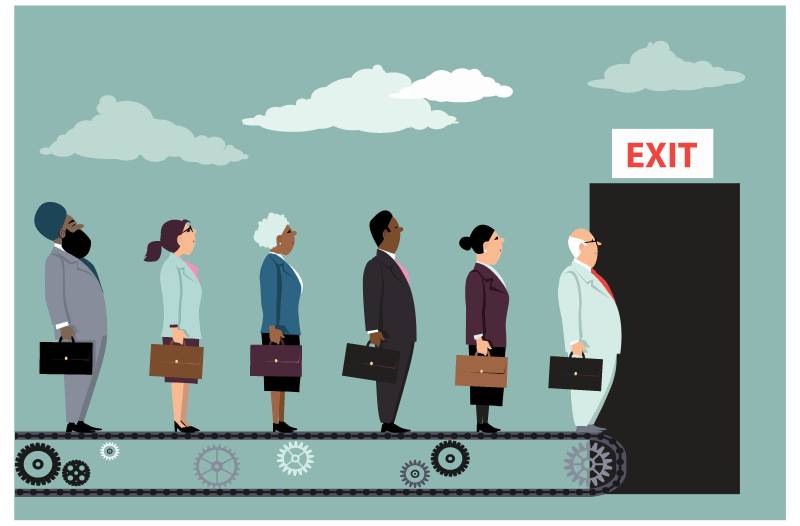Where is your recruiting headed in the balance of 2022? To help guide you, Labor Market Research Analyst David Garrett has put together the Joveo US Industry Forecast 2022. Here’s Part 2 of our conversation with David about the Forecast and the constellation of factors at play in the US job market.
Joveo: What’s happening with return to office [RTO]? The latest COVID variant seems to have upended plans for that.
David: Yes, it seems that RTO mandates change weekly, although some companies already gave up on trying to get employees to come back to the office a while ago. But one of the biggest factors in RTO decisions isn’t employees at all. It’s real estate. For example, in late June Yelp embraced a future of remote work, saying that it plans to close 450,000 square feet of underutilized space in New York City, Washington, D.C., and Chicago. Likewise, Netflix announced plansto sublease tens of thousands of square feet of office space in Burbank, California, and a few other locations. Salesforce, San Francisco’s largest private employer, listed half of its office footprint in Salesforce West for sublease in early July.
It’s not completely clear what’s driving shrinking real estate footprints. It’s likely a combination of continued work from home [WFH], a distaste for hybrid work – Yelp’s CEO says hybrid work is “hell” – and declining viewership in Netflix’s case.
Joveo: How does this trend translate into candidates’ holding the upper hand in a hot job market?
David: It’s definitely a moving target. For example, in early May, Bloomberg reported that, from Wall Street to Silicon Valley, RTO plans “unravel as workers rebel in a tight job market.” On the other hand, more recently, a number of big companies have slowed down hiring, which can be a bellwether of wider market trends. [This development was also discussed in Part 1 of our Q&A with David.]
Thelatest unemployment numbersshow that the number of people filing for initial unemployment benefits the week ending July 16 hit 251,000. While that figure is still low by historical standards, it’s the highest level of first-time weekly jobless claims in eight months. As I said, sentiment about the job market is definitely a moving target.
Get insight into the latest talent sourcing and recruitment advertising benchmarks across 16 of the top professions in the US.
Recruitment Benchmarks for Top 16 Professions!
Joveo:Let’s talk about something we are pretty sure about: The Great Resignation. People are still quitting their jobs in droves, right?
David: Yes, the Great Resignation is still on, for all intents and purposes. The latest wrinkle is inflation; with the cost of just about everything rising dramatically this year, even people who get pay raises are resigning because the raises don’t feel that significant. Joblist’s Q2 2022 job reportfound that 41% of workers received a pay raise in the first half of 2022. However, 72% of these reported that their raise was less than 8.5%, thus failing to keep pace with the current inflation rate.
But, in addition, we also are now hearing about the Great Regret. The Joblist survey also found that a quarter of those who quit their jobs during the pandemic now regret it.

Joveo: There are indeed a lot of counterintuitive factors at play in today’s job market. In the Joveo US Industry Forecast you talk about one of them, the Beveridge curve. Does that mean everyone in recruiting is in need of liquid refreshment?
David: Perhaps, but not quite! The Beveridge curve is an economic construct that captures the inverse relationship between unemployment and vacancies. In plotting the curve, the vacancy rate goes on the y-axis and the unemployment rate is on the x-axis, typically resulting in a downward slope. Simply put, when the rate of unemployment is high – such as, during a recession – employers typically find it easier and less costly to find and hire workers. As a result, fewer vacancies are posted.
While it is normal for the Beveridge curve to change both shape and location after each recession, historically, it never returns to its original position. Although the magnitude of recent pandemic-related shifts is unprecedented, the underlying causes are consistent with continuing structural changes in the labor market, not recession. That means employers will continue to be competing aggressively for potential employees and, in turn, higher rates of job postings will continue.
Joveo: Thank you, David, for exploring and explaining some of the latest employment trends.
You can find out more about the Beveridge curve and how it may impact your recruitment advertising plans by getting your copy of Joveo US Industry Forecast 2022 now.
Get a handle on recruitment advertising costs by requesting a demo of Joveo solutions today. And keep coming back to the Joveo blog for more fresh, original thought-provoking content. Follow us on Twitter and LinkedIn, where we’re always working to help you get the most out of your recruitment advertising.














